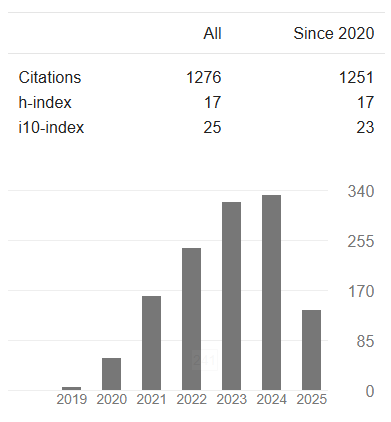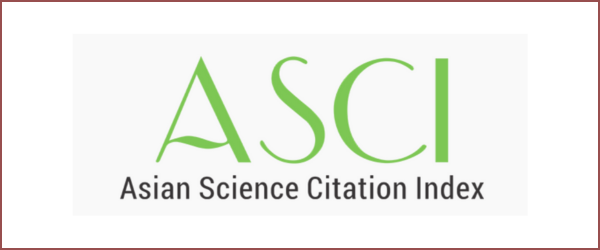Investigating SMEs Performance: Innovation, Leadership, or Investment Driven?
DOI:
https://doi.org/10.14421/EkBis.2021.5.1.1257Keywords:
Leadership Orientation, Innovation Strategy, level of Investment, SMEs Performance, Structural Equation Modeling (SEM)Abstract
The main objective of this study is to find out how much influence the leadership orientation and innovation strategies affect the level of SMEs investment, which has implications for improving firm performance. This research uses structural equation modeling (SEM) analysis tools to test hypotheses. While the data in this study were processed using AMOS software. However, before testing, a goodness-of-fits model test is used to determine whether the data used is following the SEM model. This study uses a data collection tool in the form of a questionnaire that is calculated for each variable; the study sample is Central Java and DI Yogyakarta SMEs. Empirically all the hypotheses in this study is supported, then this research can be concluded as follows, improving the performance of SMEs can be achieved through the implementation of the company's innovation strategy, the company's ability to invest and the company's foresight in conducting high leadership orientation. The better application of innovation strategy and the strength of SME entrepreneurs in their leadership orientation and their courage in increasing investment to increase the company's innovation capability, it will have implications for improving business performance.
Downloads
 Abstract viewed: 491 times
|
Abstract viewed: 491 times
|
 PDF downloaded = 380 times
PDF downloaded = 380 times
References
Alkhoraif, A., Rashid, H., & McLaughlin, P. (2019). Lean implementation in small and medium enterprises: Literature review. Operations Research Perspectives, 6.
Altman, E. J., & Tushman, M. L. (2017). Platforms, open/user innovation, and ecosystems: A strategic leadership perspective. Advances in Strategic Management, 37, 177–207.
Anwar, M., Rehman, A. U., & Shah, S. Z. A. (2018). Networking and new venture’s performance: mediating role of competitive advantage. International Journal of Emerging Markets, 13(5), 998–1025.
Aryee, S., Kim, T. Y., Zhou, Q., & Ryu, S. (2019). Customer service at altitude: effects of empowering leadership. International Journal of Contemporary Hospitality Management, 31(9), 3722–3741.
Brown, J., Broderick, A. J., & Lee, N. (2007). Word Of Mouth Communication Within Online Communities. Journal of Interactive Marketing, 21(3), 2–21.
Camgoz-Akdag, H., & Zaim, S. (2012). Education: A Comparative Structural Equation Modeling Study. Procedia - Social and Behavioral Sciences, 47, 874–880.
Chen, Y., & Yuan, Y. (2007). The innovation strategy of firms: empirical evidence from the Chinese high‐tech industry. Journal of Technology Management in China, 2(2), 145–153.
David, F. R., & Carolina, S. (2014). Strategic Management Concepts and Cases. In Zeitschrift für Personalforschung (Vol. 28, Issue 3).
Duarte, V., & Sarkar, S. (2011). Separating the wheat from the chaff - a taxonomy of open innovation. In European Journal of Innovation Management (Vol. 14, Issue 4, pp. 435–459).
Fatimah, T., & Martadistra, D. S. (2019). Keterkaitan Perencanaan Rantai Pasokan dan Integrasi Rantai Pasokan Terhadap Kemampuan Kustomisasi Massal Umkm Makanan. Media Riset Bisnis & Manajemen, 19(2), 58.
Fernández, E., Iglesias-Antelo, S., López-López, V., Rodríguez-Rey, M., & Fernandez-Jardon, C. M. (2019). Firm and industry effects on small, medium-sized and large firms’ performance. BRQ Business Research Quarterly, 22(1), 25–35.
G., K. (2012). From the stakeholder viewpoint: Designing measurable objectives. Journal of Business Strategy, 33(6), 40–46.
Hair, J. F., Black, W. C., Babin, B. J., & Anderson, R. E. (2010). Multivariate Data Analysis. In Vectors (p. 816).
Hanifah, H., Halim, H. A., Ahmad, N. H., & Vafaei-Zadeh, A. (2019). Can internal factors improve innovation performance via innovation culture in SMEs? Benchmarking, 27(1), 382–405.
Hartini, S. (1996). Peran Inovasi Pengembangan Kualitas Produk Dan Kinerja Bisnis. 82–88.
Herrera Madueño, J., Larrán Jorge, M., Martínez Conesa, I., & Martínez-Martínez, D. (2016). Relationship between corporate social responsibility and competitive performance in Spanish SMEs: Empirical evidence from a stakeholders’ perspective. BRQ Business Research Quarterly, 19(1), 55–72.
Hilman, H., & Kaliappen, N. (2015). Innovation strategies and performance: are they truly linked? World Journal of Entrepreneurship, Management and Sustainable Development, 11(1), 48–63.
Hutahayan, B. (2020). The mediating role of human capital and management accounting information system in the relationship between innovation strategy and internal process performance and the impact on corporate financial performance. Benchmarking: An International Journal, ahead-of-print(ahead-of-print).
Ivanisevic Hernaus, A. (2019). Exploring the strategic variety of socially responsible investment: Financial performance insights about SRI strategy portfolios. Sustainability Accounting, Management and Policy Journal, 10(3), 545–569.
Kathuria, R., Partovi, F. Y., & Greenhaus, J. H. (2010). Leadership practices, competitive priorities, and manufacturing group performance. International Journal of Operations and Production Management, 30(10), 1080–1105.
Koh, S. C. C. L., Demirbag, M., Bayraktar, E., Tatoglu, E., & Zaim, S. (2007). The impact of supply chain management practices on performance of SMEs. Industrial Management & Data Systems, 107(1), 103–124.
Kraus, S., Rigtering, J. P. C., Hughes, M., & Hosman, V. (2012). Entrepreneurial orientation and the business performance of SMEs: A quantitative study from the Netherlands. Review of Managerial Science, 6(2), 161–182.
Kumar, V., Jabarzadeh, Y., Jeihouni, P., & Garza-Reyes, J. A. (2020). Learning orientation and innovation performance: the mediating role of operations strategy and supply chain integration. Supply Chain Management.
Kyissima, K. H., Xue, G. Z., Yapatake Kossele, T. P., & Abeid, A. R. (2019). Analysis of capital structure stability of listed firms in China. China Finance Review International.
Lee, E., Jo, S. H., & Jeong, H. (2019). Environmental management in small and medium enterprises: the role of customer orientation and firm performance. Journal of Business and Industrial Marketing, 34(8), 1779–1790.
Lin, C. C., Fang, C. R., & Cheng, H. P. (2010). Relationships between oil price shocks and stock market: an empirical analysis from Greater China. China Economic Journal, 3(3), 241–254.
Meutia, & Ismail, T. (2012). The Development of Entrepreneurial Social Competence and Business Network to Improve Competitive Advantage and Business Performance of Small Medium Sized Enterprises: A Case Study of Batik Industry in Indonesia. Procedia - Social and Behavioral Sciences, 65(ICIBSoS), 46–51.
Parkman, I. D., Holloway, S. S., & Sebastiao, H. (2012). Creative industries: aligning entrepreneurial orientation and innovation capacity. Journal of Research in Marketing and Entrepreneurship, 14(1), 95–114.
Pilar, P. G., Marta, A. P., & Antonio, A. (2018). Profit efficiency and its determinants in small and medium-sized enterprises in Spain. BRQ Business Research Quarterly, 21(4), 238–250.
Popli, S., & Rizvi, I. A. (2015). Exploring the relationship between service orientation, Employee engagement and perceived leadership style: A study of managers in the private service sector organizations in India. Journal of Services Marketing, 29(1), 59–70.
Quinton, S., & Khan, M. A. (2009). Generating web site traffic: A new model for SMEs. Direct Marketing, 3(2), 109–123.
Rantapuska, T., & Ihanainen, O. (2008). Knowledge use in ICT investment decision making of SMEs. Journal of Enterprise Information Management, 21(6), 585–596.
Rashid, A. (2011). How does private firms’ investment respond to uncertainty?: Some evidence from the United Kingdom. Journal of Risk Finance, 12(4), 339–347.
Rocks, S., Gilmore, A., & Carson, D. (2005). Developing strategic marketing through the use of marketing networks. Journal of Strategic Marketing, 13(2), 81–92.
Shakina, E., Barajas, A., Parshakov, P., & Chadov, A. (2017). Status-quo vs new strategy in intangibles. Journal of Economic Studies, 44(1), 138–153.
Tan, K. S., Chong, S. C., & Lin, B. (2013). Intention to use internet marketing: A comparative study between Malaysians and South Koreans. Kybernetes, 42(6), 888–905.
Varadarajan, R. (2018). Innovation, innovation strategy, and strategic innovation. In Review of Marketing Research (Vol. 15, pp. 143–166). Emerald Group Publishing Ltd.
Wilkens, K. A., Heck, J. L., & Cochran, S. J. (2006). The effects of mean reversion on alternative investment strategies. Managerial Finance, 32(1), 14–38.
Wirawan, H., Tamar, M., & Bellani, E. (2019). Principals’ leadership styles: the role of emotional intelligence and achievement motivation. International Journal of Educational Management, 33(5), 1094–1105.
Yoo-Kyoung, M. S., & Norton. (2007). Predicting purchase intention of a controversial luxury apparel product. Journal of Fashion Marketing and Management, 11(4), 571–586.
Young Park, J., & Wook Kim, S. (2010). An empirical model to assess the influence of the government’s research and development program on Korean small and medium enterprise (SME) performance. Asian Journal on Quality, 11(3), 288–302.
Zhang, Y., & Zhang, X. (2012). The effect of entrepreneurial orientation on business performance: A role of network capabilities in China. Journal of Chinese Entrepreneurship, 4(2), 132–142.





























 This work is licensed under a
This work is licensed under a 